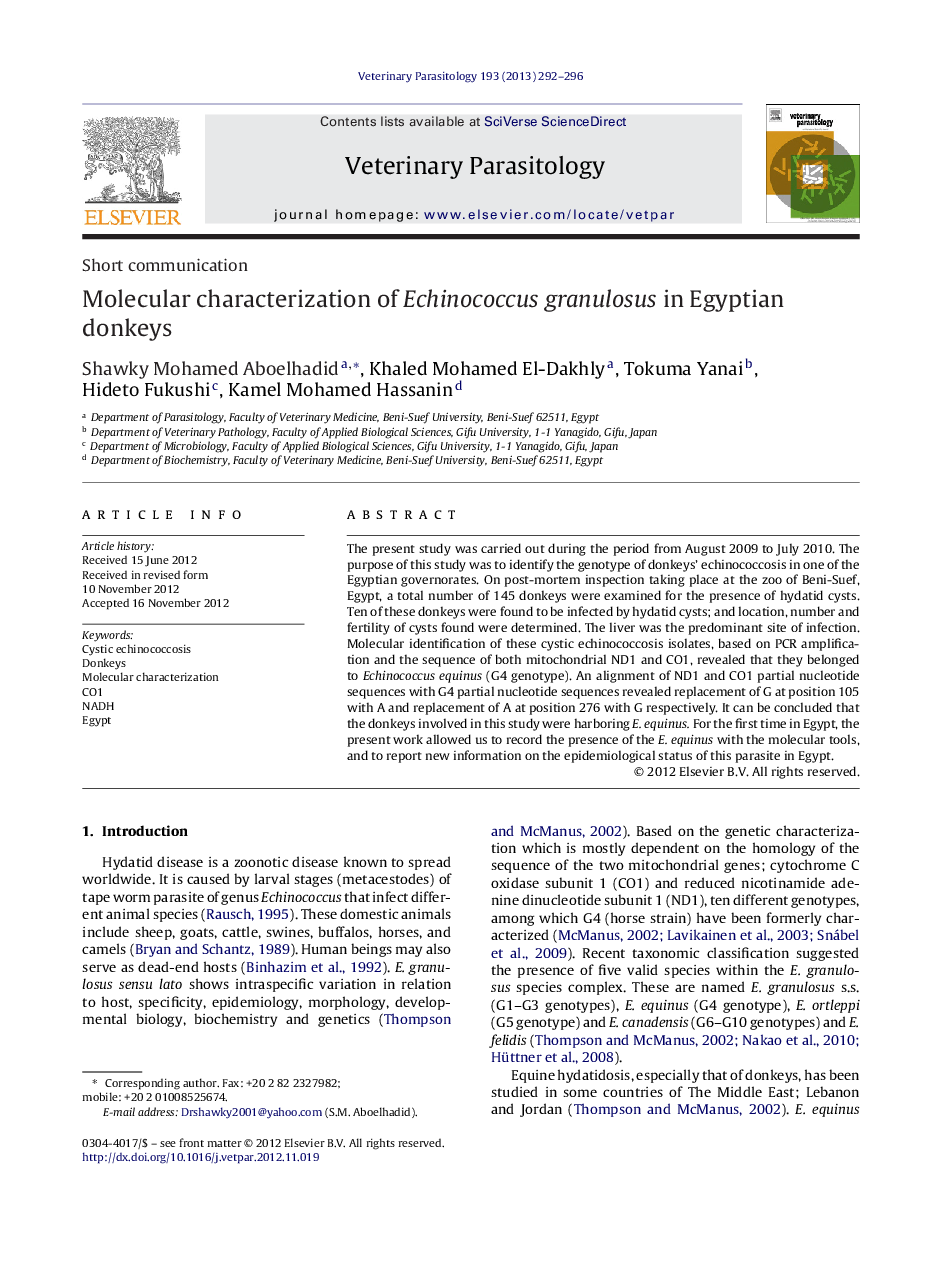| Article ID | Journal | Published Year | Pages | File Type |
|---|---|---|---|---|
| 5804349 | Veterinary Parasitology | 2013 | 5 Pages |
The present study was carried out during the period from August 2009 to July 2010. The purpose of this study was to identify the genotype of donkeys' echinococcosis in one of the Egyptian governorates. On post-mortem inspection taking place at the zoo of Beni-Suef, Egypt, a total number of 145 donkeys were examined for the presence of hydatid cysts. Ten of these donkeys were found to be infected by hydatid cysts; and location, number and fertility of cysts found were determined. The liver was the predominant site of infection. Molecular identification of these cystic echinococcosis isolates, based on PCR amplification and the sequence of both mitochondrial ND1 and CO1, revealed that they belonged to Echinococcus equinus (G4 genotype). An alignment of ND1 and CO1 partial nucleotide sequences with G4 partial nucleotide sequences revealed replacement of G at position 105 with A and replacement of A at position 276 with G respectively. It can be concluded that the donkeys involved in this study were harboring E. equinus. For the first time in Egypt, the present work allowed us to record the presence of the E. equinus with the molecular tools, and to report new information on the epidemiological status of this parasite in Egypt.
